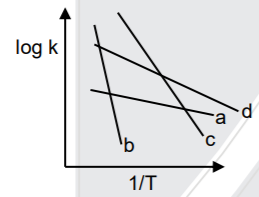Comparative study of skulls is
(a) Craniology
(b) Conchology
(c) Malacology
(d) Osteology
Craniology
Conchology
Malacology
Osteology
The correct Answer is:A
To solve the question regarding the comparative study of skulls, we need to analyze each of the provided options:
1. Understanding the question: The question asks for the term that describes the comparative study of skulls.
2. Analyzing Option A: Craniology:
- Craniology is defined as the study of the differences in shape, size, and proportions among the skulls of different human races.
- This directly relates to the comparative study of skulls, making it a strong candidate for the answer.
3. Analyzing Option B: Conchology:
- Conchology is the study of mollusk shells.
- Since this does not relate to skulls, we can eliminate this option.
4. Analyzing Option C: Malacology:
- Malacology is the branch of invertebrate zoology that studies mollusks.
- Like conchology, this does not pertain to the study of skulls, so we can also eliminate this option.
5. Analyzing Option D: Osteology:
- Osteology is the study of the structure and function of bones, or the skeletal system in general.
- While it involves bones, it does not specifically focus on skulls alone, so this option is not the correct answer.
6. Conclusion: After analyzing all the options, the correct answer is (a) Craniology, as it specifically refers to the comparative study of skulls.
- Craniology is defined as the study of the differences in shape, size, and proportions among the skulls of different human races.
- This directly relates to the comparative study of skulls, making it a strong candidate for the answer.
- Conchology is the study of mollusk shells.
- Since this does not relate to skulls, we can eliminate this option.
- Malacology is the branch of invertebrate zoology that studies mollusks.
- Like conchology, this does not pertain to the study of skulls, so we can also eliminate this option.
- Osteology is the study of the structure and function of bones, or the skeletal system in general.
- While it involves bones, it does not specifically focus on skulls alone, so this option is not the correct answer.
Topper's Solved these Questions
- BOOK - CENGAGE BIOLOGY ENGLISHCHAPTER - LOCOMOTION AND MOVEMENTEXERCISE - ARCHIVES12videos
LOCOMOTION AND MOVEMENT
- BOOK - CENGAGE BIOLOGY ENGLISHCHAPTER - EXCERETORY PRODUCTS AND THEIR ELIMINATIONEXERCISE - ARCHIVES22videos
EXCERETORY PRODUCTS AND THEIR ELIMINATION
- BOOK - CENGAGE BIOLOGY ENGLISHCHAPTER - MINERAL NUTRITIONEXERCISE - ARCHIVES39videos
MINERAL NUTRITION
Similar Questions
The study of joints is known as
(a) Osteology
(b) Arthrology
(c) Craniology
(d) KinesiologyView SolutionThe study related to the structure and function of cell is called as
(a) Physiology
(b) Cell biology
(c) Histology
(d) CytologyView SolutionStudy of origin and development of humans is called (A) Eugenics (B) Euthenics (C) Ethnology (D) Anthropology
View SolutionCoracoid is component of
(a) Fore limb
(b) Skull
(c) pectoral girdle
(d) Pelvic girdleView SolutionCoracoid is component of
(a) Forelimb
(b) Skull
(c) Pectoral girdle
(d) Pelvic girdleView SolutionCompare Ea (activation energy) for a, b, c and d.
 View Solution
View SolutionFirst scientist to study development of angiosperm embryo was
(a) Strasburger
(b) Flemming
(c) Hanstein
(d) HofmeisterView SolutionChoose the correct combination
(Column I,,Column II),(A. Malacology,,p reptiles),(B. Pomology,,q fungi),(C. Mycology,,r fruits),(D. Qrnithology,,s Molluscs),(,t birds)View SolutionThe basis of modern taxonomic studies are :-
(a) External and internal structure
(b) Structure of cell
(c) Development process
(d) Ecological informationsView SolutionDicondylic skull is characteristic feature of
(a) Amphibia and mammalia
(b) Aves and mammalia
(c) Amphibia and reptilia
(d) Reptilia and avesView Solution

